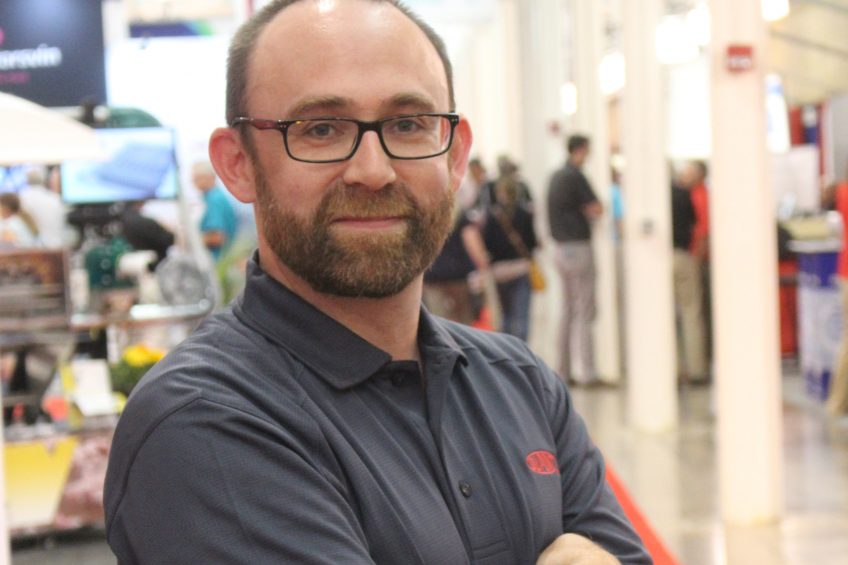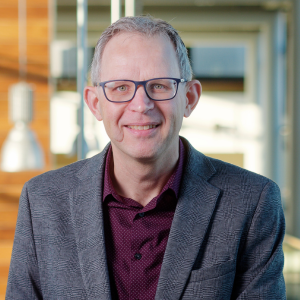“Antibiotics covered up a lot of issues”

With antibiotics usage being heavily debated these days, increasingly the notion grows that animal health and animal nutrition are actually 2 sides of the same coin. In that light it isn’t so strange that microbiologist Dr Al Thomas made it to a senior position within a feed additives company.
Once upon a time, young researcher Alastair Thomas vowed never to go back to chickens again. He had been doing his PhD on the effects of stress on Campylobacter colonisation in poultry production and as such, he had to sample 18,000 chicken caeca.
So off he went, leaving the animals behind and back into theories and technologies. His career evolved, and over the years he became interested in pursuing a commercial career. Danisco, the animal nutrition division of DuPont Industrial Biosciences, offered him this opportunity. You never guess which animals were waiting for him at this new company…
Poultry, however, this never impeded his progress in the business. On the contrary, as of this year, he has been North America sales lead, responsible for the monogastric side of the business, focusing both on the pig and the poultry business. An interesting job, in an interesting time and in an interesting area.
BIOAlastair (Al) Thomas, 41, is the new North America sales lead for Danisco, the animal nutrition division of DuPont’s ‘Industrial Biosciences’ business unit. He is responsible for the sales team aimed at the markets in Canada and the United States. British by birth, he earned a PhD in microbiology at the University of Bath, UK, and continued his postdoctoral work investigating the impact of bird stress on Campylobacter colonisation in broiler chickens at the University of Bristol, UK. He joined DuPont as a product manager for probiotics in 2012. |
What is the major challenge for the poultry and swine business at the moment?
Al Thomas: “I think we are at a turning point in the industry. The benefits of nutrition within the feed additives base of customers of the feed industry is well-established, but this barrier of antibiotic reduction has thrown up a lot more problems than the industry anticipated, certainly on the health side.”
Is that because people were unaware of the problems because they just used a lot of antibiotics?
“I think antibiotics covered up a lot of issues. No single problem becomes apparent when you remove or start reducing your antibiotics. It is a lot of other issues in the whole integrated process becoming apparent, from animal breeding through to nutrition; the importance of actual house and farm care becomes clear and biosecurity needs to be stepped up; issues like animal density and grower education become vital as well. There’s no single solution that’s going to slip in and replace antibiotics. A lot more attention has got to be paid to the whole integrated chain, to really maintain that performance as you reduce those antibiotics.”
What role can your company play in this?
“The challenge as a nutritional health company is how to manage those problems. There’s no straightforward nutritional solution, there’s not going to be a straightforward health solution, so how are we going to help customers or individual farms in a consultative way? That is kind of the direction we want to move in, we want to understand all the problems across these different functions and help our customers. We may not have the answers within our portfolio or within our company but we know from our experience or from talking to our other customers – hey, this has worked in this area, have you tried this? People coming out of the industry, who are now in our team, are also spending time talking more about litter quality, ventilation, than about feed additives.”
Is the role of an animal nutrition company wider than just supplying nutritional solutions?
“Absolutely. I don’t really see us as a straight nutritional company, as we’ve grown our health component, the direct-fed microbial (DFM) business. Especially in North America, certainly ‘nutritional health’ is the area we focus on, I think it is very important to understand the impact of gut health and fundamentally what’s happening inside the animals. We are only scratching the surface with our research. I think we, as a supplier, need to provide that research and to
share that with our customers. And to have partnerships on a commercial scale.”
Do you think that this product range would’ve been developed if the antibiotic reduction movement hadn’t been around?
“I think it would have. But I’ve seen a change in the acceptance of gut health solutions in the last 2 years, which I think has largely been driven, forced to a certain extent, by antibiotic reduction. To a point where most of our swine and poultry customers are comfortable in thinking: this could be a component of an antibiotic reduction programme.”
Zooming out, DuPont is a huge chemical company, especially after the merger with Dow, so how can a tiny part of the market like the feed additives business survive within such a big operation?
“From the outside I can see how that looks, but from the inside, within the Industrial Biosciences division, the enzyme technology and microbiology are the basis of our business. There are very successful business units, from biomaterials to bioethanol and animal nutrition, and there’s a synergy between those. We never really felt that we were compromised at DuPont, we felt we had a lot of support from the wider business.”
Will this recent merger with Dow have any influence on this group of businesses so to say?
“I haven’t got a crystal ball, but what I’ve seen certainly in the last 12 months is almost a reinvestment in the Industrial Biosciences capability and a reinvestment certainly in global innovation at the experimental station in Wilmington, USA is a strong component of that. We really expanded that team and are unfolding wider research across DuPont with a focus on animal nutritional health, specifically at a genetic level. And some of the research areas we are moving into, are in the health space, beyond nutritional biology and what’s happening in the bird or pig. We want to know what’s happening at the gut level, at the host level. It really is going to be the strategic move forward for us, to know about the microbiome research or just broader molecular understanding or technology.”
2050 – people always say by then it will be difficult to feed the 9.2 billion people in the world. Obviously you will say it is possible.
“It is going to have to be a compromise between feeding animals and feeding people, as there is a constant conflict. At the moment, consumer pressure is moving in a direction of slower growing animals and antibiotic-free production. There has to be a tipping point, however, where there is a realisation that a lot of those elements in modern production are there for productivity, to generate that growing need for meat in the human market. What public perception is steering towards now, will not be able to sustain the needs of the population. We’ve got to do better providing those alternatives to maintain the productivity as some of these tools get removed.”
Do you have an idea when or where that tipping point is going to be?
“I work on a day-to-day basis with veterinarians and nutritionists in the industry, whose job it is to maintain the welfare of the bird or pig. That is their ultimate aim, but they are left with limited treatment choices for sick birds or pigs. In some cases, you have a flock of birds or batch of pigs, which have a specific disease and you do not have the tools to treat them. Do you just kill those animals? Or do you treat them in conflict with ‘antibiotic reduction’? That really is the paradox facing all poultry and pig producers. There is a responsibility to grow healthy birds – what do you do when they become unhealthy?”













